Ipomopsis aggregata, Skyrocket
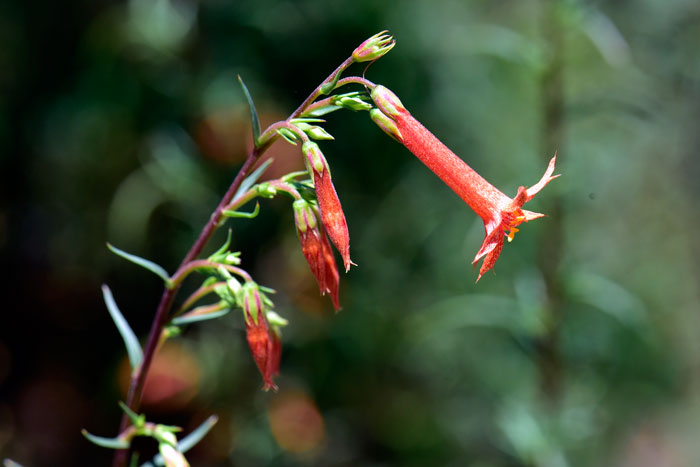
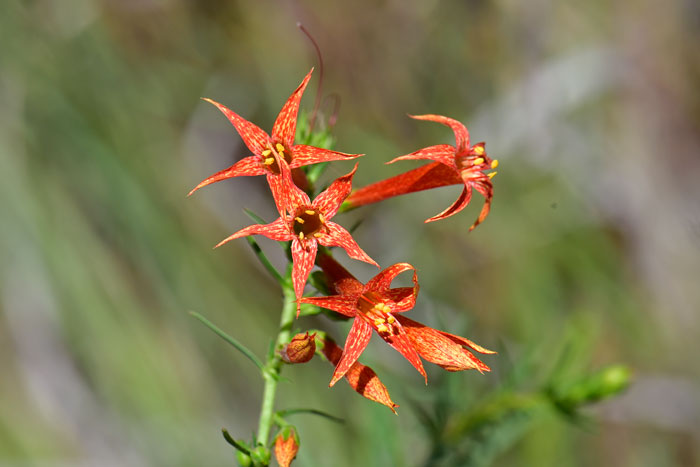
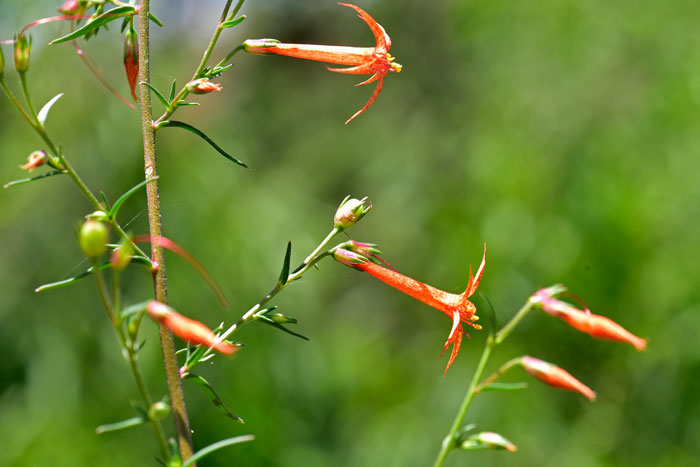
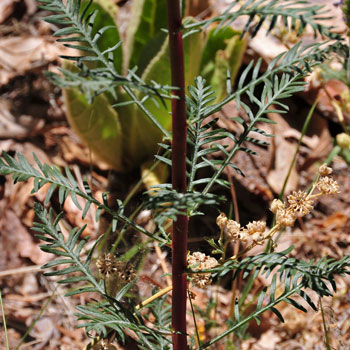
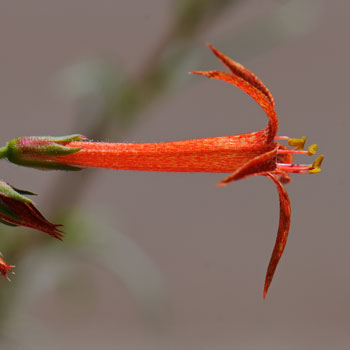
Scientific Name: Ipomopsis aggregata
Common Name: Skyrocket
Also Called: Scarlet Gilia, Skunkflower, Skyrocket Gilia
Family: Polemoniaceae, Jacob’s Ladder or Phlox Family
Synonyms: (Gilia aggregata, Gilia pulchella)
Status: Native
Duration: Biennial, perennial;
Size: Up to 6 feet.
Growth Form: Forb/herb; stems erect glabrous or glandular, slightly hairy.
Leaves: Green; new leaves basal leaves divided into narrow segments, (pinnately lobed).
Flower Color: Red, (brilliant red), often with yellow blotches, sometimes pink or pale orange; inflorescence usually one sided, clusters of tubular flowers (1 to 7) per stem, multiple stems which may reach up to 6 feet, corolla about 1 inch long, both stamens and style exserted; calyx lobes relative small compared to corolla sharply pointed.
Flowering Season: May to September.
Elevation: 5,000 to 8,500 feet.
Habitat Preferences: Variable; in Arizona mostly in open coniferous forest, shrubby brush-lands, scrub, woodlands.
Recorded Range: Ipomopsis aggregata is found in the southwest and northwest United States; AZ, CA, CO, ID, MT, NM, NV, OK, OR, TX, UT, WA, WY). It is also found in Canada in British Columbia and Mexico. In Arizona it is found in the northern, central and central southern parts of the state with few records in the southwest and southeast parts of the state.
North America & US County Distribution Map for Ipomopsis aggregata.
U.S. Weed Information: No information available.
Invasive/Noxious Weed Information: No information available.
Wetland Indicator: No information available.
Threatened/Endangered Information: No information available.
The Plant List includes 29 accepted species names world-wide for Ipomopsis world-wide.
There are 7 sub-species in Ipomopsis aggregata as follows:
Ipomopsis aggregata subsp. aggregata, Scarlet Gilia, (US-CO, ID, MT, NM, NV, UT, WA, WY, CA-BC);
Ipomopsis aggregata subsp. attenuata, Scarlet Gilia, (CO, WY);
Ipomopsis aggregata subsp. bridgesii, Scarlet Gilia, (CA);
Ipomopsis aggregata subsp. candida, Scarlet Gilia, (AZ, UT);
Ipomopsis aggregata subsp. collina, Scarlet Gilia, (AZ, UT);
Ipomopsis aggregata subsp. formosissima, Scarlet Gilia, (AZ, CA, CO, NM, NV, OK, OR, TX, UT, WA);
Ipomopsis aggregata subsp. weberi, Scarlet Gilia (CO, ID, WY).
Comments: Skyrockets cultivated in residential gardens and landscapes. One of Arizona's showiest wild flowers found above 5,000 feet. Skyrocket may be browsed by livestock and deer, grazed by elk and attracts hummingbirds. Natural browsing on Skyrocket encourages new growth.
In Southwest Desert Flora also see Flaxflowered Ipomopsis, Ipomopsis longiflora, Manyflowered Ipomopsis, Ipomopsis multiflora and Slendertube Skyrocket, Ipomopsis tenuituba.
Skyrocket or Scarlet Gilia is used by several North American indigenous peoples; the Great Basin Indian tribe used the plant as a drug where an infusion of the whole plant is used for blood disease, the Hopi used the plant after birth when the mother lied in bed for 15 or 20 days, the Navajo used the plant for many ailments including as a cathartic, for spider bites, as an emetic and applied to body of hunter and weapons for good luck. See ethno-botanical uses at Native American Ethnobotany, University of Michigan, Dearborn.

